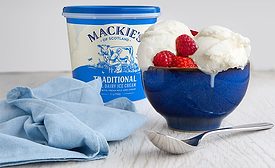Home » environment
Articles Tagged with ''environment''
Packaging: Health & environment
Removing the forever chemicals from packaging
Two companies formed a joint effort to create an open source chemical replacement for PFAS in food packaging carry-out containers and the like
August 13, 2021
Spiral freezers
Spiral freezer provides quality ice cream maker efficient, environmentally friendly operation
Based on carbon dioxide refrigerant, the freezer is not only friendly to the environment but also safe to use, providing consistent product freezing
August 5, 2021
Pollution control
Novel method to provide nitrogen to plants without nitrate pollution
What if corn and wheat could create most of their own nitrogen like soy and peas?
June 24, 2021
Reducing environmental chemicals
Organic botanical biopesticides based on tea tree oil: Safe for the environment and people
This relatively new family of biopesticides shows promise for the future and is already used alone and in combination with chemical treatments
June 17, 2021
Whole Foods adopts Honeywell’s lower GWP refrigerant technology
Lower global-warming-potential (GWP) refrigerant helps food retailers comply with current and proposed environmental regulations
April 21, 2021
Dry Processing
Case packer from Syntegon helps Nature’s Path stay true to environmental mission
June 15, 2020
Packaging
Bioplastic packaging ripe for innovation
Compostable, biodegradable packaging still in early stages of adoption
June 8, 2020
Elevate your expertise in food engineering with unparalleled insights and connections.
Get the latest industry updates tailored your way.
JOIN TODAY!Copyright ©2024. All Rights Reserved BNP Media.
Design, CMS, Hosting & Web Development :: ePublishing













